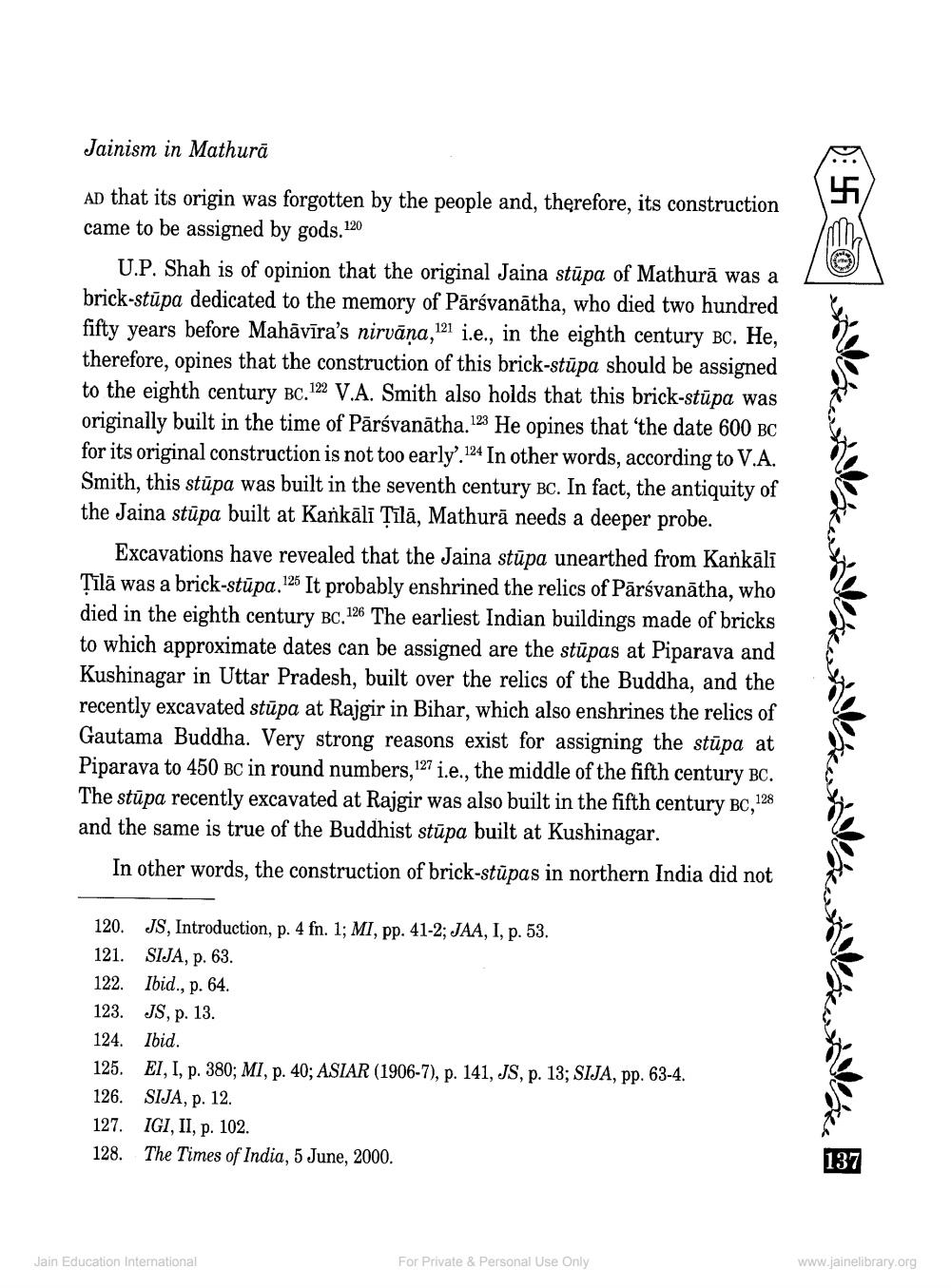________________
Jainism in Mathurā
Ad that its origin was forgotten by the people and, therefore, its construction came to be assigned by gods.120
U.P. Shah is of opinion that the original Jaina stupa of Mathurā was a brick-stūpa dedicated to the memory of Pārsvanātha, who died two hundred fifty years before Mahāvīra’s nirvāņa,121 i.e., in the eighth century BC. He, therefore, opines that the construction of this brick-stūpa should be assigned to the eighth century BC.122 V.A. Smith also holds that this brick-stūpa was originally built in the time of Pārsvanātha.123 He opines that 'the date 600 BC for its original construction is not too early'.124 In other words, according to V.A. Smith, this stūpa was built in the seventh century BC. In fact, the antiquity of the Jaina stūpa built at Kankāli sīlā, Mathurā needs a deeper probe.
Excavations have revealed that the Jaina stupa unearthed from Kankālī Tīlā was a brick-stūpa.125 It probably enshrined the relics of Pārsvanātha, who died in the eighth century BC. 126 The earliest Indian buildings made of bricks to which approximate dates can be assigned are the stūpas at Piparava and Kushinagar in Uttar Pradesh, built over the relics of the Buddha, and the recently excavated stūpa at Rajgir in Bihar, which also enshrines the relics of Gautama Buddha. Very strong reasons exist for assigning the stūpa at Piparava to 450 BC in round numbers, 127 i.e., the middle of the fifth century BC. The stūpa recently excavated at Rajgir was also built in the fifth century BC, 128 and the same is true of the Buddhist stūpa built at Kushinagar.
In other words, the construction of brick-stūpas in northern India did not
120. JS, Introduction, p. 4 fn. 1; MI, pp. 41-2; JAA, I, p. 53. 121. SIJA, p. 63. 122. Ibid., p. 64. 123. JS, p. 13. 124. Ibid. 125. EI, I, p. 380; MI, p. 40; ASIAR (1906-7), p. 141, JS, p. 13; SIJA, pp. 63-4. 126. SIJA, p. 12. 127. IGI, II, p. 102. 128. The Times of India, 5 June, 2000.
137
www.jainelibrary.org
For Private & Personal Use Only
Jain Education International




